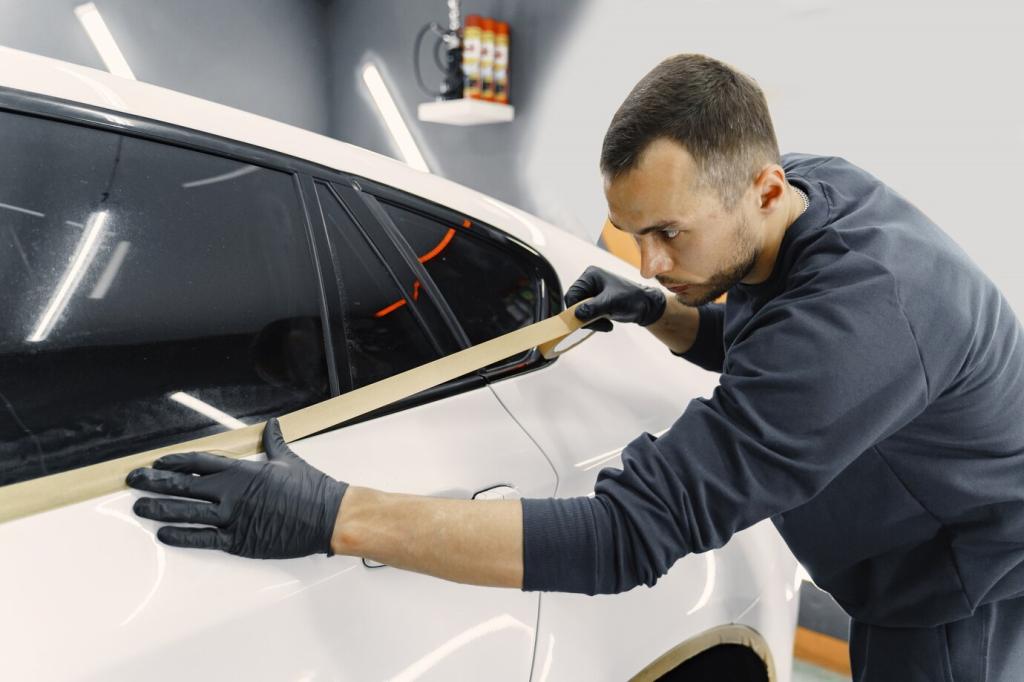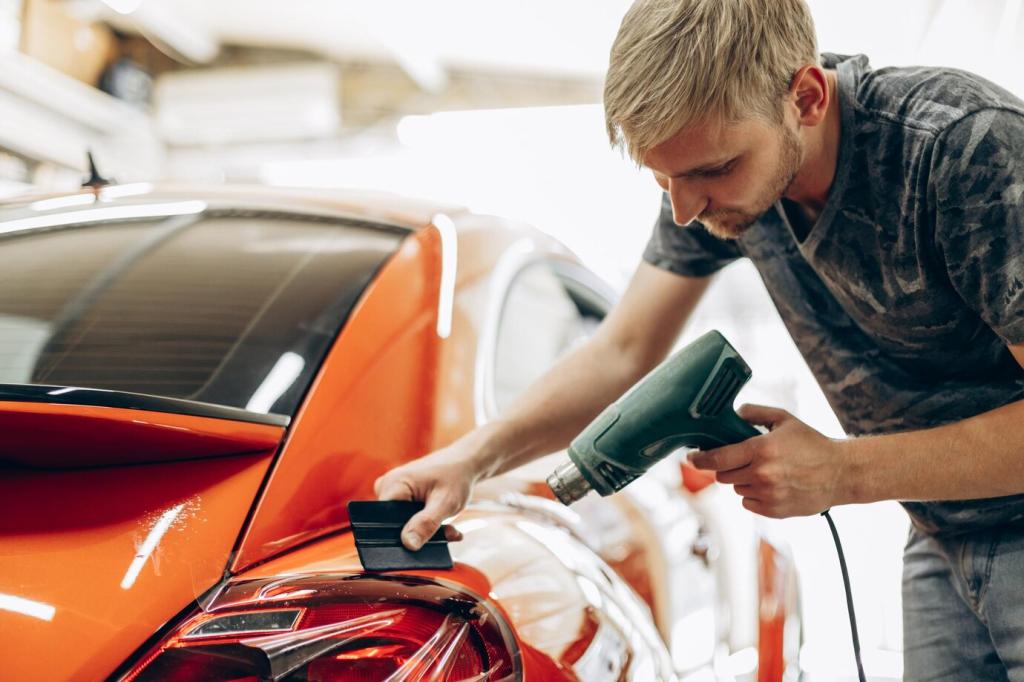Paint Preparation and Finishing Without Regrets
Degrease twice, then sand in crosshatch patterns to reveal highs and lows. Epoxy locks bare steel before filler. Guide coats and long-block sanding teach patience, building straightness you can feel, not just admire under shop lights.
Paint Preparation and Finishing Without Regrets
Set regulator at the gun, confirm consistent CFM, and use a fresh desiccant dryer. Overlap passes seventy percent, keep gun square, and pace your wrist. Always wear a respirator; isocyanates are unforgiving and cumulative.



